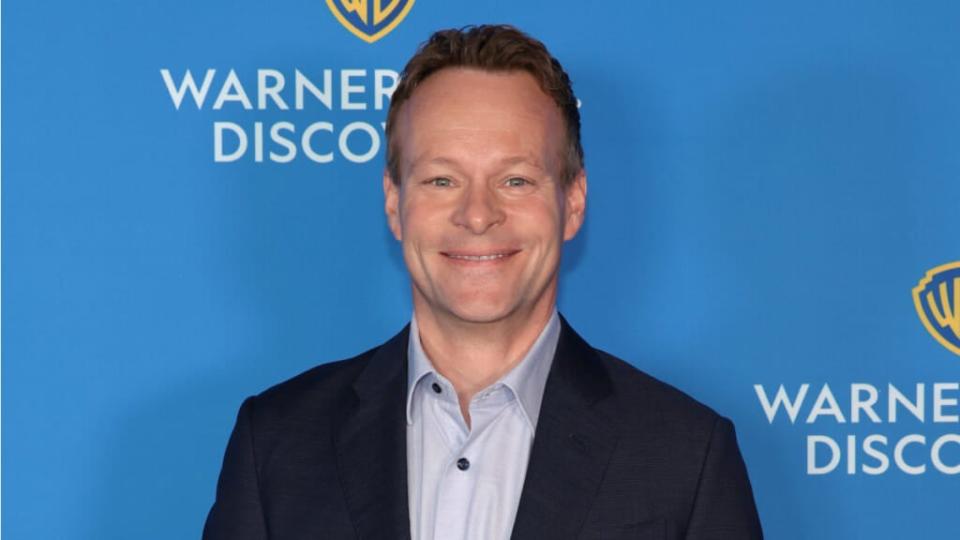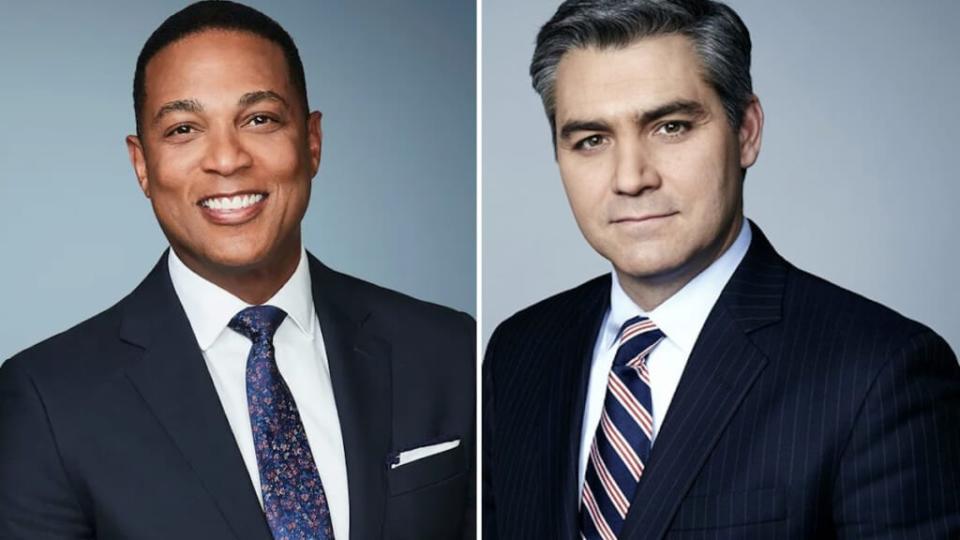Is CNN’s Pivot to the Center a Smart Business Move or the Dumbest Idea Ever?
- Oops!Something went wrong.Please try again later.
- Oops!Something went wrong.Please try again later.
- Oops!Something went wrong.Please try again later.
- Oops!Something went wrong.Please try again later.
Back in 2018, deep in the dark days of the Trump administration, CNN began running a new series of advertisements for itself. They were called the “Facts First” spots and mostly involved people mistaking a banana for an apple.
“This is an apple,” one of the 60-second promos began, showing a plump red honeycrisp in front of a white backdrop as a piano tinkled a pensive tune. “Some people might tell you it’s a banana. They might scream ‘banana, banana, banana’ over and over again. They might put banana in all caps. You might even start to believe that this is a banana. But it’s not. This is an apple.”
It was a simple, elegant metaphor that said everything you need to know about the nightmare of cable news broadcasting during the Trump era.
But here we are, four years later, and CNN is upsetting its own apple cart, announcing a slew of editorial and programming changes that sound, frankly, kind of bananas. The network’s 2022 game plan? To lure a slew of new viewers by pivoting to the center. The news organization that Trump once called “the enemy of the people,” that he tried to ban from the White House press room, is even hoping to appeal to — get this — some Fox News viewers.
“In this age,” one former head of another news network predicted, “that strategy is doomed.”
Also Read:
CNN’s Centrist Move Triggers Call to #BoycottCNN: ‘New Corporate Oligarchy’
Brian Stelter, who’d been tirelessly pushing back against Donald Trump’s “fake news” offensive and Fox News’ conspiracy-mongering for much of his nine-year stint as host of CNN’s “Reliable Sources,” is out. His long-running Sunday morning media analysis program was unceremoniously canceled on Aug. 18. Chris Wallace, the former Fox News star, is in, as the anchor of a shiny new Sunday night interview show at 7 p.m. So far, Don Lemon, Jim Acosta and Jake Tapper — all of whom have been tough-as-nails critics of the former twice-impeached ex-president — are looking safe. But you never know.
“This is a time of change and I know that is unsettling,” Christ Licht, CNN’s new CEO told CNN employees at an Aug. 19 staff meeting (he replaced Jeff Zucker when it was revealed last February that Zucker had been having a consensual affair with one of his key lieutenants). “There will be more changes and you might not understand it or like it all.”
Licht seems like the kind of guy who doesn’t waste time; he’s already banished the ubiquitous “breaking news” banners that used to be part of the network’s on-air wallpaper and discouraged the use of the phrase “Big Lie” to describe Trump’s bogus election fraud claims.

Others even higher up the corporate ladder have been hinting at further changes, including David Zaslav, the CEO of CNN’s parent company, Warner Bros. Discovery (since Warner Bros. and Discovery completed their $43 billion merger last April). He’s urged the network to tone down its political rhetoric and bring more conservative voices to the channel. “America needs a news network where everybody can come and be heard — Republicans [and] Democrats,” he told reporters at Allen & Co.’s Sun Valley gathering in July.
Granted, on paper, that strategy may have some merits. After all, the network’s current tactics aren’t exactly doing gangbusters. Revenues are down, although not catastrophically (CNN is projected to make $957 million this year, just a smidge below its 2022 profitability target of $1.1 million). Ratings are also slumping, with CNN lagging behind MSNBC in viewership for the last 18 months, while CNN and MSNBC have both been trailing Fox News for years. Although, to be fair, CNN and MSNBC are fighting for the same blue-ish audience, while Fox has audiences in the red states all to itself.
Also Read:
Inside Brian Stelter’s Ouster and CNN’s New Direction | Analysis
In any case, CNN has decided to pivot. And some folks think that’s a grand idea.
“The approach could be really smart,” NYU marketing professor Paul Hardart told TheWrap. “CNN was founded by Ted Turner as a straight news organization. It just sort of organically became the opposite of Fox. Moving back to what CNN was originally, I think that’s a reasonable strategy.”
Jon Klein, who headed CNN from 2004 to 2010, agreed – not surprising since middle of the road strategy this was the signature of his tenure leading the network. “It’s not only the best strategy to follow, it’s the only strategy,” he says. “When I was running the place, we had a very high percentage of viewers who would watch us and then go watch Fox. We shared a lot of viewers with MSNBC because they trusted us to tell them what’s going on. We had the highest ratings we ever had. The last time CNN beat Fox was the election year of 2008.”
Still, despite all that, there is one not-so-small hitch to CNN’s new straight-down-the-middle master plan: It’s not 2008 anymore.
Back then, when Klein’s CNN was on top, there were still two functioning political parties in America. You could put a Democrat and a Republican together on the same TV screen and the worst that would happen was a rousing ideological argument over whether the marginal tax rate should be 37% or 42%. Yes, there was some fringey craziness over health care death panels and whether Sarah Palin could see Russia from her house, but for the most part the center held. Sanity largely prevailed.

Today, though, sanity is in short supply. Once U.S. House members Liz Cheney and Adam Kinzinger depart elective office in January, exactly which Republicans in Congress will the new, inclusive CNN invite on its airwaves for a reasoned exchange of ideas? The one who thinks President Biden is behind a Bolshevik plot to arm the IRS and turn America into Sweden? Or the one who thinks the late Hugo Chavez hacked into America’s voting machines to cheat Trump out of a second term? How will CNN invite the “other side” on its airwaves when all that’s left of the other side often seems completely bonkers.
Even as a business plan, the idea of de-politicizing CNN seems like a lost cause. In the 14 years since 2008, cable news viewers have only hardened their silos. Hardly anyone bops from CNN to Fox News to MSNBC anymore, unless they’re forced to (like when social scientists paid regular Fox News viewers to spend two weeks watching CNN to see what impact it had on their political views). The idea that CNN could lure hordes of Fox viewers by canceling “Reliable Sources” and chasing after some imaginary middle ground seems about as likely to succeed as that CNN+ streaming service that lasted about a month last spring. More likely, CNN will simply annoy its existing viewers and push them to MSNBC.
In this looking-glass political environment, where one side of the aisle (and cable dial) has decided it is no longer encumbered by facts or reality, there may be no center for CNN to pivot to. Except, maybe, for the one it already occupies.
“Most of us are there already, standing up for democracy, decency, covering the news,” one high-level network staffer told TheWrap. “Walter Cronkite — that’s what we’re trying to do.”
Breaking news: An apple is still an apple, not a banana.
Katie Campione and Sharon Waxman contributed reporting to this article.
Also Read:
‘The Murdochs: Empire of Influence’ Original Series Gets September Premiere Date on CNN (Video)

